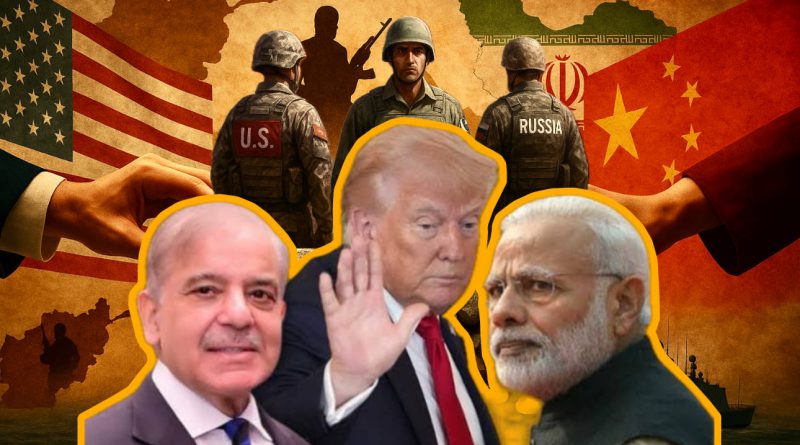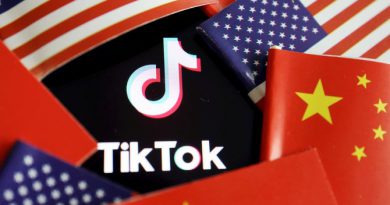The Next Gulf War 2.0 is Loading: Why India Must Remain on Alert
It is Gulf War logic all over again: present intervention as protecting sovereignty, while in reality securing access to critical resources.
In 1990, the Gulf War erupted not only because Iraq invaded Kuwait but because the lifeline of global power—oil—was at stake. Superpowers clashed, alliances shifted, and a regional dispute spiraled into a global confrontation.
Today, the world finds itself on the brink of a similar crisis. But this time, the battlefield is not the Persian Gulf, and the prize is not oil. The new arena is Pakistan, and the resource at the heart of the contest is rare earth elements (REEs)—the hidden backbone of modern technology, from electric vehicles and wind turbines to chips and advanced defense systems.
What oil represented in the 20th century, rare earths will represent in the 21st. And Pakistan, sitting at the intersection of fragile governance and immense geological promise, is emerging as the next potential flashpoint.
Oil Was Yesterday, Rare Earths Are Today
Oil defined power for decades. Rare earths will define the new century. China currently controls nearly 60 percent of global mining and about 90 percent of refining, granting Beijing unrivaled leverage over the “magnets” that drive electric motors, fighter jets, and green energy infrastructure.
For the West, memories of oil dependence in the 1970s remain painful. Watching China’s near-monopoly today, Western powers are desperate to diversify supply chains. Enter Pakistan.
Geological surveys point to potential reserves in the Peshawar Alkaline Province and coastal sands, alongside copper-gold giants such as Reko Diq. Pakistan is no Saudi Arabia of rare earths yet, but the scramble has already begun.
China’s Deep Entrenchment
Beijing saw this opportunity early. Through the China-Pakistan Economic Corridor (CPEC) and the development of Gwadar Port, China embedded itself deep into Pakistan’s infrastructure. Highways, energy plants, and logistics hubs now tie western China directly to the Arabian Sea.
Gwadar is not merely a trade port; it is China’s answer to the Malacca Strait—a strategic route that allows Beijing to bypass chokepoints dominated by the U.S. and its QUAD allies.
Now imagine coupling Gwadar with rare earth extraction, refining, and exports. China would not just control Pakistan’s highways and ports; it would also dominate the minerals of the future.
Washington’s Calculated Entry
For Washington, allowing another strategic resource to flow through a Chinese-built corridor is unacceptable.
The U.S. strategy has been less visible than Beijing’s infrastructure projects, but no less significant. Washington’s levers include IMF pressure, financial manipulation, and security deals wrapped in counterterrorism narratives.
During Donald Trump’s administration, the U.S. quietly positioned itself. By supporting Pakistan’s designation of the Balochistan Liberation Army (BLA) as a terrorist organization, Washington presented itself as a “stability partner.” Trump also gave Pakistan’s military leadership face-saving gestures, including credit for ceasefires like Operation Sindoor, while his true aim was access to rare earth deposits in Balochistan and Khyber Pakhtunkhwa.
It is Gulf War logic all over again: present intervention as protecting sovereignty, while in reality securing access to critical resources.
Pakistan’s Geography: Blessing and Curse
Pakistan’s tragedy—or asset—is its geography.
For decades, Islamabad has been courted for its location. For the U.S., Pakistan was a launchpad for operations in Afghanistan, a vantage point against the USSR, and a surveillance hub for China and India. For Beijing, Pakistan offered direct access to the Arabian Sea via the Belt and Road Initiative.
But geography has also condemned Pakistan to perpetual interference. Positioned at the crossroads of China’s Belt and Road, near the Strait of Hormuz, and on the edge of Afghanistan’s mineral basin, Pakistan has become the meeting ground for superpower ambitions.
Every corridor matters to someone: China needs Gwadar; Iran eyes transit; Russia sees an Afghan entry point; the West seeks a counterweight to Beijing. Yet Pakistan itself—burdened by debt, insurgency, and weak governance—risks being torn apart in the process.
Russia’s Opportunism
The collapse of Afghanistan offered Moscow a fresh opening. With Africa already part of its sanctions-evading playbook, Russia now looks eastward. Its strategy: secure lithium, copper, and rare earth access in unstable regions in exchange for weapons, oil, or cash.
If Moscow can secure transit routes through northern Pakistan and Afghanistan, it could insert itself into the rare earth game, gaining both financial survival and bargaining power on the global stage.
This leaves Pakistan facing yet another heavyweight demanding entry into its fragile terrain.
A Crowded Chessboard
The picture is stark. China stands as the long-term investor, firmly entrenched through CPEC and Gwadar. The United States, meanwhile, plays the financial and diplomatic card, using IMF leverage and security deals to carve out influence.
Russia probes through Afghanistan, seeking to trade minerals for sanction relief, while Iran works to tie Pakistan’s exports to its own regional leverage. And at the center of it all lies Pakistan—mired in debt, instability, and insurgency, its sovereignty compromised by the very geography that once made it desirable.
The Resource Trap
The Gulf War showed that when superpowers invoke “defending sovereignty,” they are in reality defending access. Then it was barrels of oil; today it is grams of neodymium, dysprosium, and praseodymium.
For the U.S., the goal is to keep Pakistan out of China’s grip. For China, the goal is to lock Pakistan into its mineral and maritime hub. For Russia, the aim is sanctions relief through access. For Iran, the strategy is influence through transit.
For Pakistan, the outcome may be grim: partial debt relief at best, enrichment of elites like General Asim Munir at worst, and further fragmentation of its already fragile federation—potentially splintering into Balochistan, Khyber Pakhtunkhwa, and other regions.
India’s Stakes in the Shadow War
Should India celebrate Pakistan’s struggles? Absolutely not.
As Pakistan becomes a silent battlefield for global powers, it will inevitably seek to deflect instability outward. India must prepare for terror attacks, cross-border firing, propaganda campaigns, and political interference—early hints of which are already visible, from misinformation targeting India’s Election Commission to deepening caste-driven politics.
India must remain vigilant, for while Pakistan may be the battleground, New Delhi is always the neighbor at risk.
Yet India is not without power.
While Pakistan hosts the minerals, extraction and export require secure corridors. China cannot move resources without maritime routes. The U.S. cannot project influence without bypassing Indian naval power.
The Karachi port is the only viable exit point for Pakistan’s rare earths. But the Indian Navy’s command of the Arabian Sea remains formidable. Without India’s tacit acceptance, neither Washington nor Beijing can safely move resources out of Pakistan.
This places New Delhi in a unique position: it may not seek Pakistan’s rare earths, but it holds leverage over their movement.
The Next Gulf War?
The coming confrontation will not look like Desert Storm. Instead, it will be a war of technical superiority, financial manipulation, and infrastructure control. China gained a head start with CPEC; the U.S. has made up ground through IMF leverage and military diplomacy.
But India, Iran, and Afghanistan hold critical pressure points. Any attempt to extract Pakistan’s hidden treasures without their cooperation risks collapse.
The so-called “Gulf War 2.0” is not about oil fields but rare earth corridors. And at the center of it lies Pakistan: indebted, divided, and dangerous.
Pakistan’s willingness to serve as the “darling” of both Washington and Beijing masks a deeper reality: its very geography threatens its sovereignty. Its reserves may fuel the future, but its people may see little benefit.
For India, the lesson is clear. The next Gulf War is loading, but the battlefield is across its western border. While Pakistan risks disintegration under the weight of competing superpowers, India must brace for the spillover—ensuring that in this new great game, it is not dragged unwillingly into the storm.
Article extracted from Deep Down Analysis.



